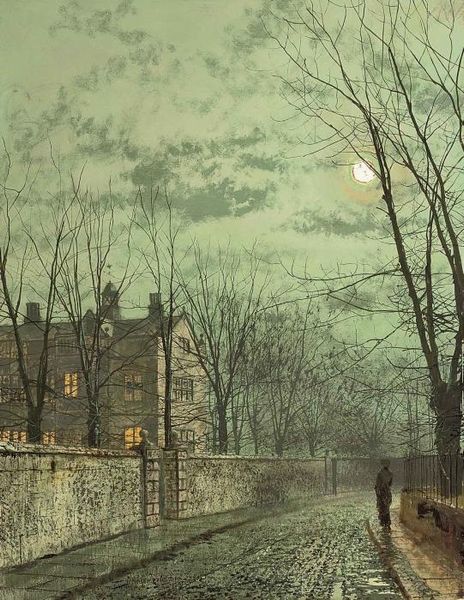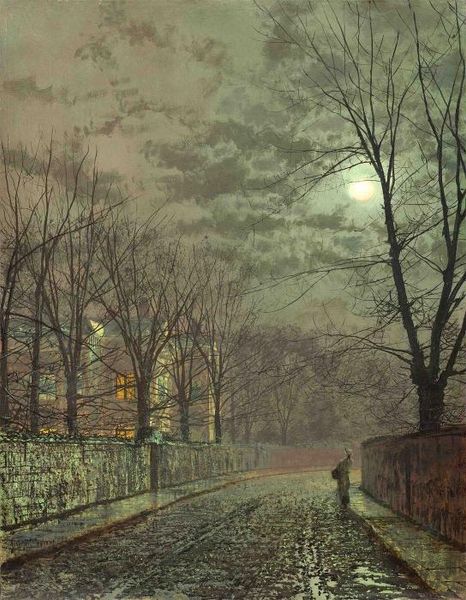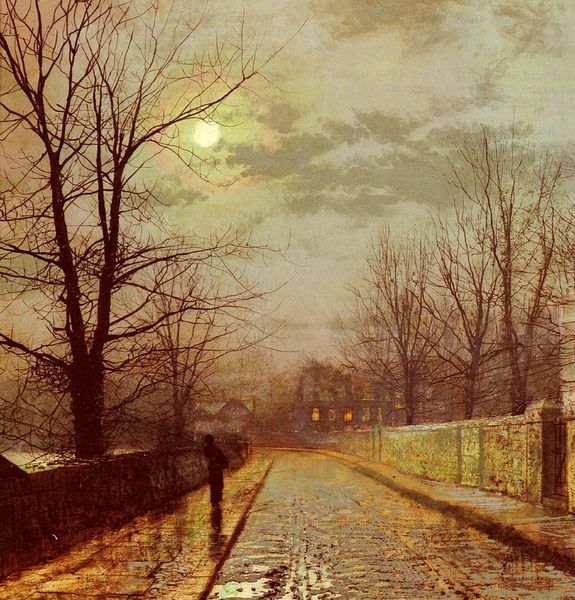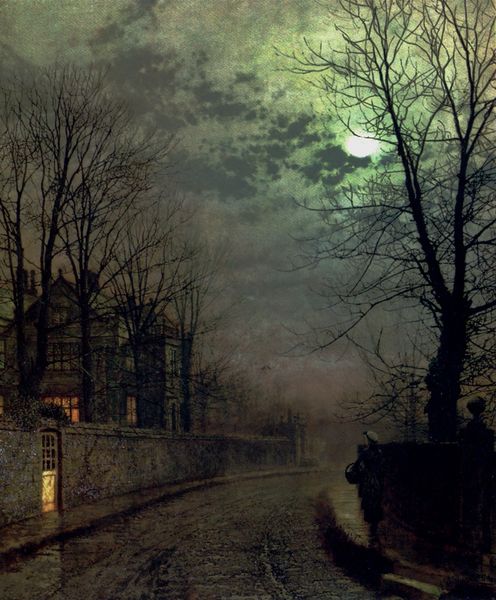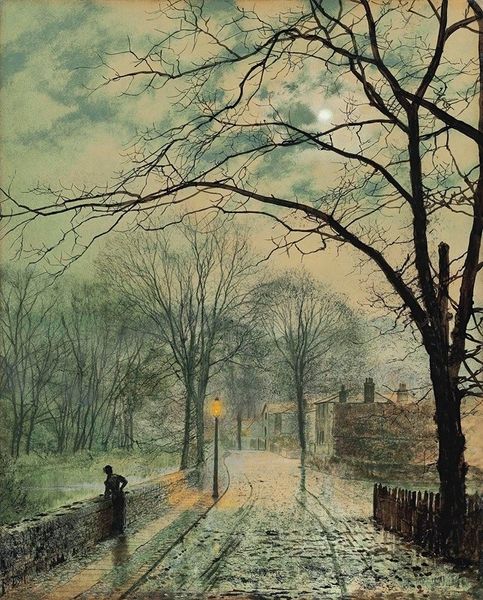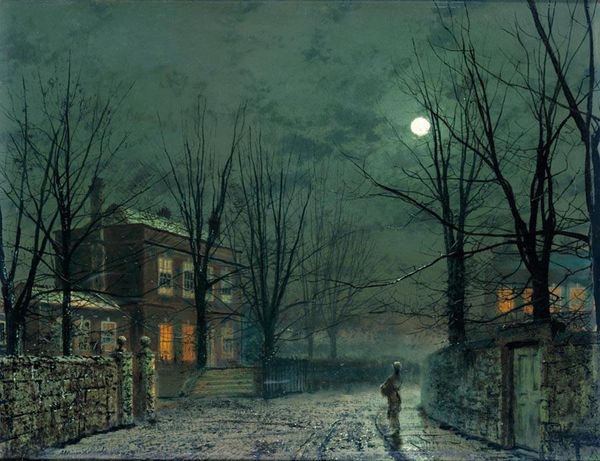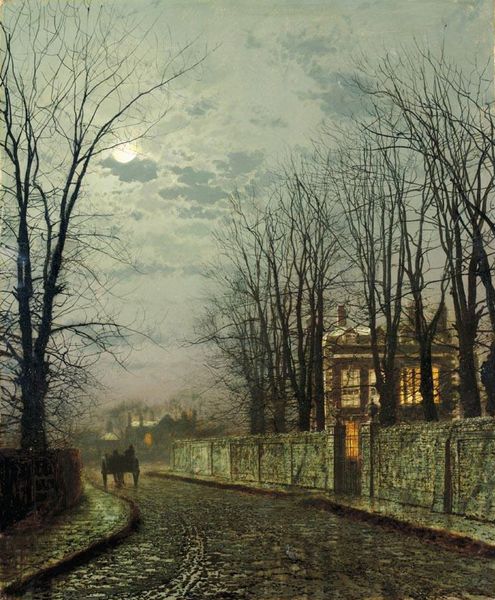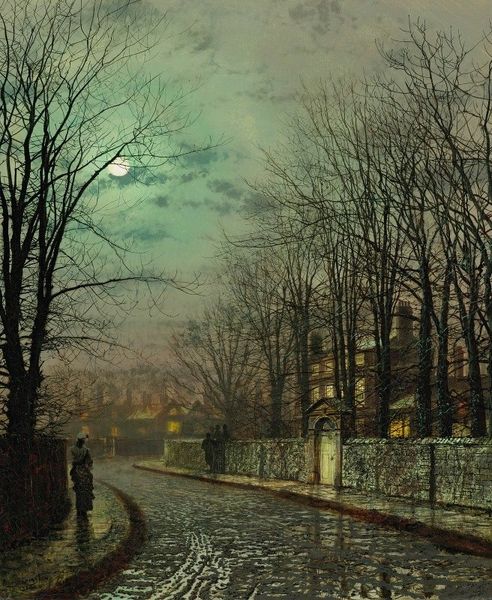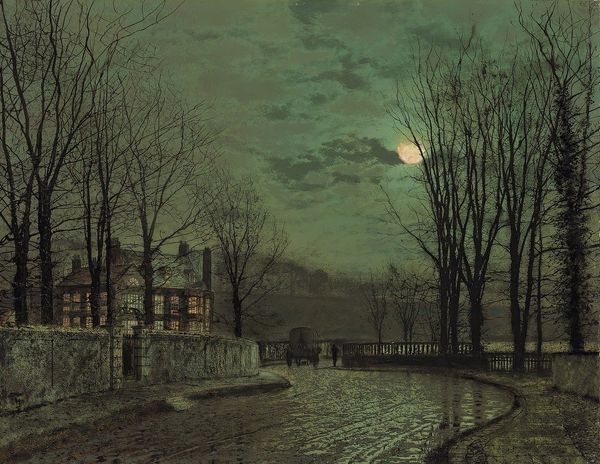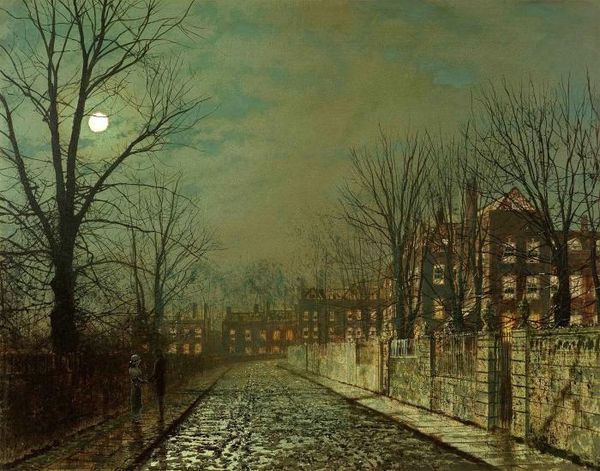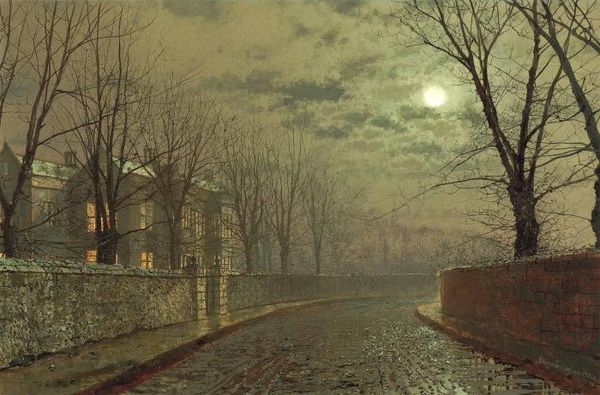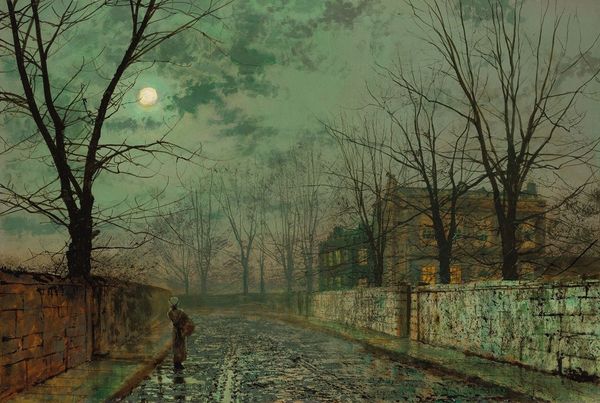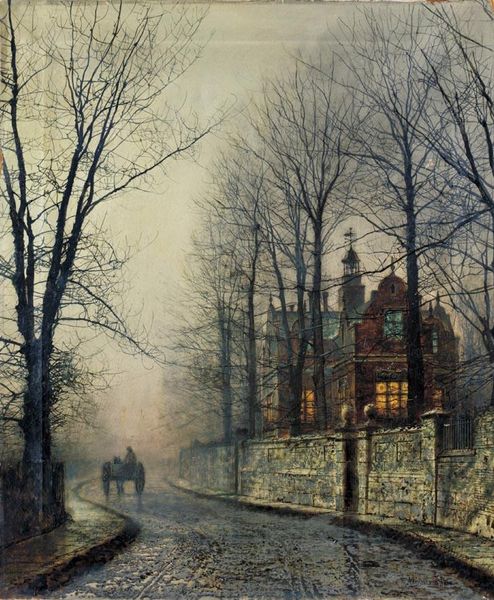
Dimensions: 32 x 23 cm
Copyright: Public domain
Curator: Here we have John Atkinson Grimshaw's "Moonlight," an oil painting created in 1882. It's a captivating, evocative piece. What's your immediate take? Editor: Gloomy but inviting, like a half-remembered dream. That light, how it bathes the scene. And that lone figure walking, so full of symbolism! Curator: Absolutely. Grimshaw was a master of capturing atmospheric effects. Notice how the moonlight filters through the bare branches. It gives a palpable sense of cold, crisp air. He wasn't painting pretty scenes, more like emotional environments. Editor: Right. Moon is the ancient symbol of transformation, a mediator between light and darkness. That moon looming in the sky isn’t just light. There’s so much visual texture here, and a wonderful narrative of light in shadow, in that urban space...I think there is a sense of psychological unrest. Curator: Interesting you say unrest. Grimshaw's nocturnes were incredibly popular during the Victorian era. There's this allure and almost gothic aesthetic to that romantic gloom he portrays. Maybe the popularity came because people could recognise their own fears, insecurities and isolation? Editor: Quite possible. Victorians loved the macabre! But to dig a bit deeper, the solitary figure trudging the cobbled street – think about that path as representing a life journey. It's shadowed but illuminated, maybe offering solace amidst that looming darkness, if one has the courage to seek it. Curator: I hadn’t thought of it that way. He has led the viewer on their own symbolic, perhaps allegorical quest! A good, if chilly, thought on which to conclude, perhaps? Editor: I think that the chill just reinforces the atmosphere he creates. Thanks, it has really shifted my perspective!
Comments
No comments
Be the first to comment and join the conversation on the ultimate creative platform.
